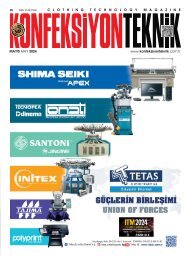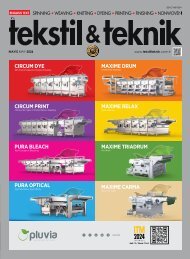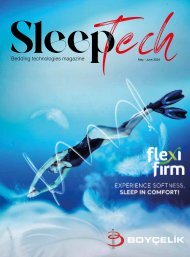Automotive Exports December 2022
Create successful ePaper yourself
Turn your PDF publications into a flip-book with our unique Google optimized e-Paper software.
Wiesmann reveals next generation technologies for<br />
latest Project Thunderball – the world’s first<br />
all-electric convertible roadster<br />
Wiesmann, the luxury sports car marque,<br />
has revealed further technical details of<br />
its highly-anticipated all-electric vehicle<br />
codenamed Project Thunderball – a<br />
vehicle that represents a return for the<br />
iconic brand with the world’s first electric<br />
convertible roadster. Designed with<br />
Wiesmann’s DNA running throughout, the<br />
car is an evolution of the exclusive German<br />
brand’s history combining the distinctive,<br />
sleek, looks of a Wiesmann with a modern,<br />
highly engineered, electric powertrain<br />
providing breath-taking performance.<br />
The two-seater, rear-wheel drive Project<br />
Thunderball sees twin electric rear-mid<br />
mounted motors delivering up to 500kW<br />
(680hp) to the rear wheels and 1100 Nm<br />
of torque, bringing phenomenal straightline<br />
performance and a targeted 0-62mph<br />
(0-100km/h) sprint acceleration time of 2.9<br />
seconds. Wiesmann’s precise engineering<br />
of the cutting-edge electric powertrain<br />
is key to delivering an emotional driving<br />
experience that is a trademark of<br />
Wiesmann sports car, embodied in timeless<br />
design that befits a performance EV of the<br />
modern era.<br />
Platform and packaging<br />
Project Thunderball has been built on<br />
a bespoke chassis architecture with its<br />
powertrain components cleverly packaged<br />
to provide the lowest possible centre<br />
of gravity. To keep the typical roadster<br />
proportions, the position of the driver and<br />
passenger are positioned as far backward<br />
as possible, presenting a challenge to<br />
integrate the drivetrain and large battery<br />
into the vehicle’s small footprint.<br />
The challenge was welcomed by its<br />
engineers who have pushed the limits<br />
of architecture configuration by locating<br />
the drivetrain behind the driver’s seat<br />
and battery modules in a T-shape along<br />
the centre tunnel and into the front of<br />
the vehicle along with the twin Axial flux,<br />
PMSM e-motors. With lightweighting key<br />
to efficiency, the vehicle’s powertrain<br />
combined with its carbon fibre body<br />
astonishingly weighs in at little more than<br />
1700kg (3747lb), providing an outstanding<br />
2.5kg per HP of performance.<br />
Battery power<br />
At the heart of the vehicle lies one of the<br />
most energy and power-dense battery<br />
packs available, providing a target range<br />
of 500km (310 miles). The 92kWh (83kWh<br />
available), Li-ion NMC, “module-to-pack”<br />
technology is based on series modules with<br />
<strong>December</strong> <strong>2022</strong> 70

















